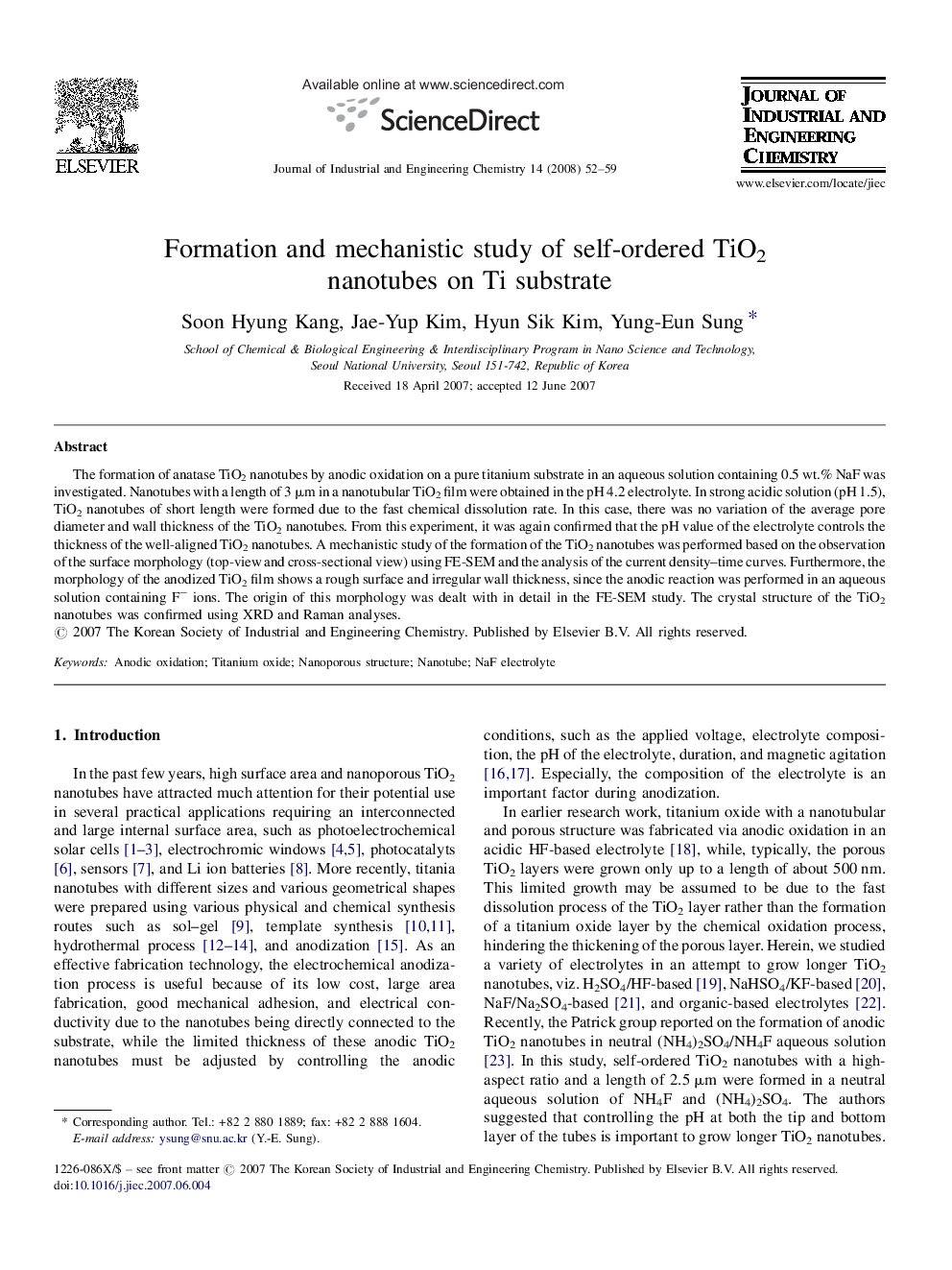| Article ID | Journal | Published Year | Pages | File Type |
|---|---|---|---|---|
| 228996 | Journal of Industrial and Engineering Chemistry | 2008 | 8 Pages |
The formation of anatase TiO2 nanotubes by anodic oxidation on a pure titanium substrate in an aqueous solution containing 0.5 wt.% NaF was investigated. Nanotubes with a length of 3 μm in a nanotubular TiO2 film were obtained in the pH 4.2 electrolyte. In strong acidic solution (pH 1.5), TiO2 nanotubes of short length were formed due to the fast chemical dissolution rate. In this case, there was no variation of the average pore diameter and wall thickness of the TiO2 nanotubes. From this experiment, it was again confirmed that the pH value of the electrolyte controls the thickness of the well-aligned TiO2 nanotubes. A mechanistic study of the formation of the TiO2 nanotubes was performed based on the observation of the surface morphology (top-view and cross-sectional view) using FE-SEM and the analysis of the current density–time curves. Furthermore, the morphology of the anodized TiO2 film shows a rough surface and irregular wall thickness, since the anodic reaction was performed in an aqueous solution containing F− ions. The origin of this morphology was dealt with in detail in the FE-SEM study. The crystal structure of the TiO2 nanotubes was confirmed using XRD and Raman analyses.
